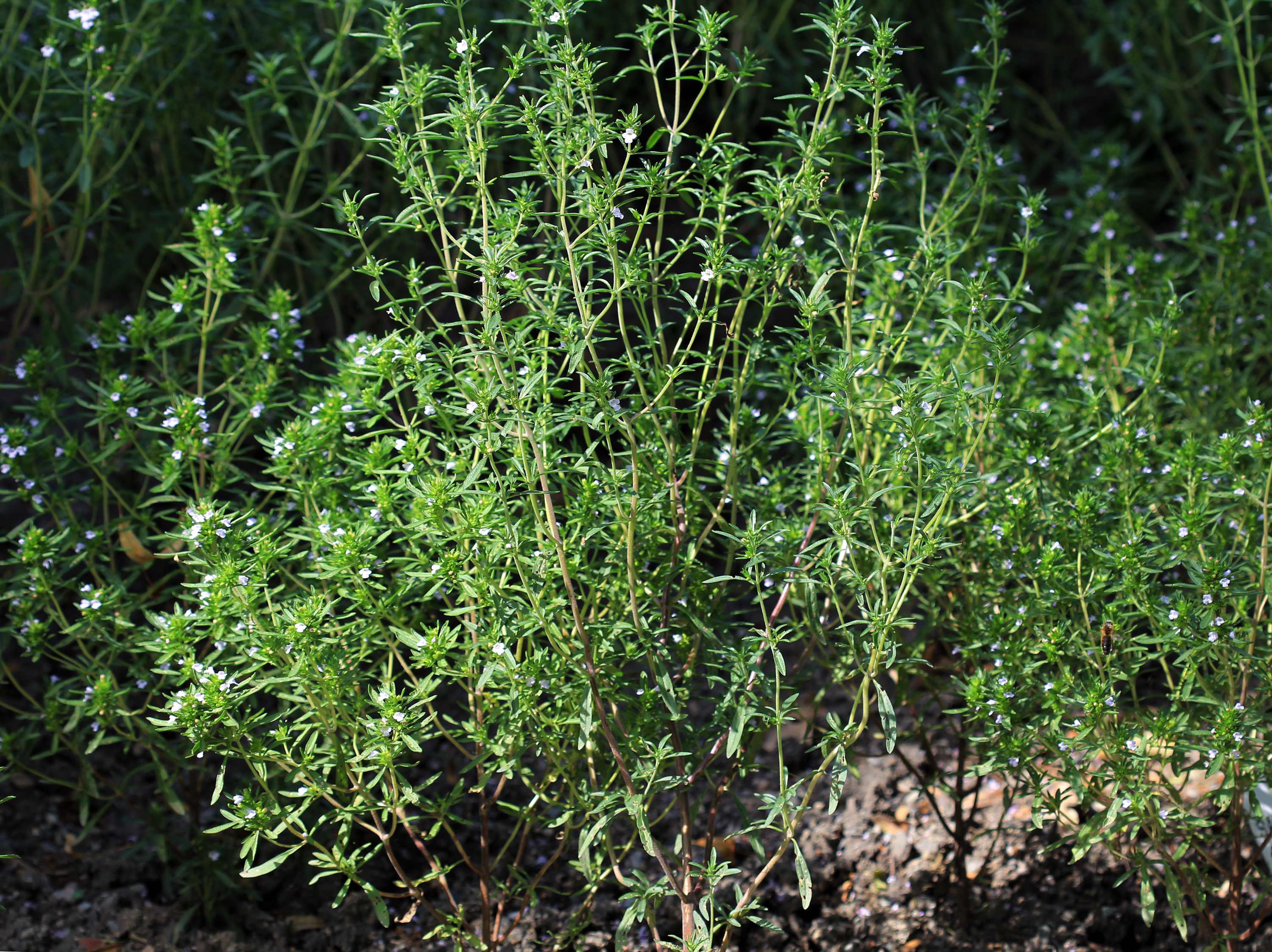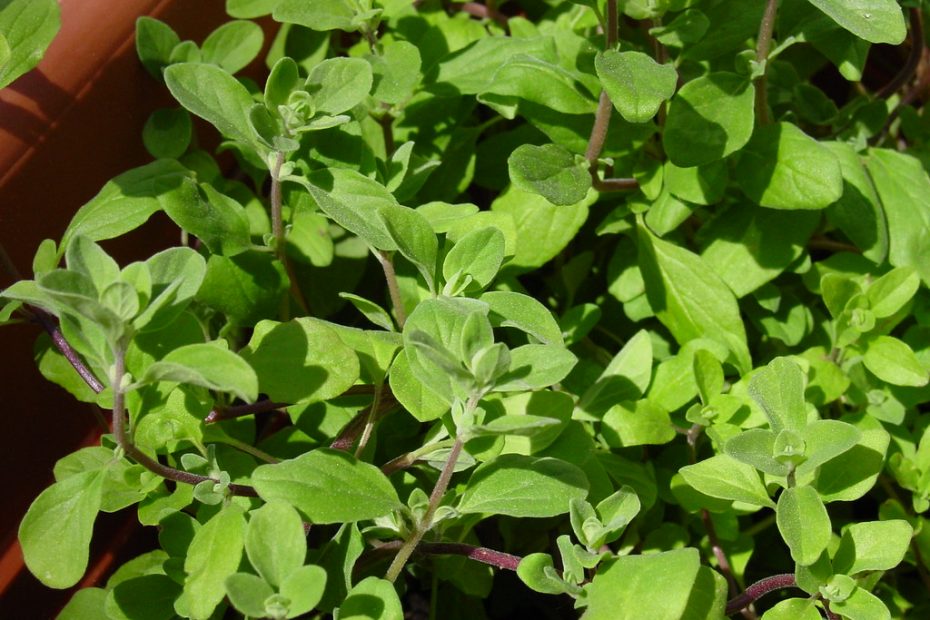Calcium is one of the most vital mineral our bodies need to function and herbs can indeed provide sufficient amounts of calcium to sustain us throughout the day. However, some herbs have high calcium while others barely contain any. So, which herbs are high in calcium?
Herbs high in calcium are
- Basil
- Savory
- Marjoram
- Dill
- Thyme
- Chervil
- Parsley
- Sage
- Mint
- Oregano
In this following post, we’ll look at the exact calcium level for each herb and explore how to best incorporate these into our diets for maximum calcium intake. I’ll also briefly touch on why calcium is so important and which herbs you should avoid when trying to boost your calcium levels.
What herbs are high in calcium?
| Herb | Calcium per 100g |
| Basil | 1684mg |
| Savory | 1567mg |
| Marjoram | 1469mg |
| Dill | 1411mg |
| Thyme | 1369mg |
| Chervil | 1136mg |
| Parsley | 1064mg |
| Sage | 1049mg |
| Mint | 1044mg |
| Oregano | 1030mg |

- Basil: Basil is a powerhouse of minerals – not just calcium but also magnesium. It provides by far the largest amount of calcium of any herb. 100 grams of basil will contain about 1684 milligrams of calcium. It is frequently used in Italian and Mediterranean cooking.
- Savory: Savory comes in two forms, summer and winter savory. The one I am referring to here is the most commonly used summer savory which can contain up to 1567mg of calcium per 100g. It is an annual herb that will die off in winter and sow its seeds for the next season.
- Marjoram: With a slight pine and citrus flavor, marjoram is a versatile garden herb that is oftentimes confused with oregano. However, marjoram contains much more calcium than oregano and provides 1469g of calcium with a 100g serving.
- Dill: This slightly bitter herb is native to central and northern Europe and commonly used in salads to balance out the taste of vinegar. It only comes in fourth in the list of herbs containing the most calcium, however, dill can be easily used in large quantities making it an ideal calcium source.
- Thyme: Thyme is a Mediterranean herb that thrives in full sun and warm climates. Native to Greece and Italy it contains plenty of calcium and contains around 1369mg of calcium per 100g. Try adding it to potatoes or chicken to maximize its flavor profile.
- Chervil: Commonly referred to as French Parsley, Chervil has a mild flavor and is often added as a finishing touch to dishes. However, it remains a rather unknown herb which makes it a hidden treasure in terms of calcium levels: 1136mg of calcium per 100g.
- Parsley: 1064mg of calcium per 100g can be found in parsley. Although it is not the most nutrient-dense herb, parsley can also be used in large amounts thanks to its relatively mild flavor.
- Sage: Typically you don’t consume the sage leaves as they have a rough consistency. But adding them to your meals can nonetheless increase calcium levels as they stew in the pot and release calcium over time when heated. You will find up to 1049mg of calcium per 100g in sage leaves.
- Mint: Mint is actually a relative of sage. It is also frequently used to flavor foods and drinks without consumption of the leaves. However, flavoring with mint leaves without heat will not release as much calcium as heating it. Nonetheless, 100g of mint leaves can provide 1044mg of calcium.
- Oregano: Lastly, oregano makes its appearance as a calcium-rich herb. So, next time you order that large Italian pizza, freely sprinkle some oregano on top to boost your calcium intake. Your body will get 1033mg of calcium per 100g of oregano.
What herbs are low in calcium?
Herbs lowest in calcium are curry, cardamom, and horseradish. Avoid all three if your intent is to boost calcium levels. Although these herbs and spices may contain some calcium, the amounts are negligible.
Generally, also the seeds of herbs are fairly low in calcium and other minerals as these are stored mostly in the leaves. As such mustard seeds, fennel seeds, anis, etc. are also fairly low in calcium.
Herbs lowest in calcium are
- Curry
- Cardamom
- Horseradish
Why calcium is important
Calcium is frequently linked to bone and joint health and even helps our body circulate blood throughout (source). What’s more, your body does not produce any calcium on its own so adding some calcium to your diet through herbs can be a great way to supplement.
While calcium and vitamin d work synergistically in absorption too much calcium can actually be harmful (source). Before adding too much extra calcium to your diet it is recommended to have your blood levels tested. So, make you consult with your doctor before making any drastic dietary changes.
How to add more calcium-rich herbs to your cooking
Adding more calcium from herbs to your meals can be a simple and tasty process. In order to maximize our calcium intake from herbs let’s look at the top 3 calcium-rich herbs – basil, savory, and marjoram – and see how we can best incorporate them.

Adding calcium to your meals with herbs:
- Basil Pesto: One of the easiest and most effective ways to add more basil to your diet is to buy or make basil pesto. Many store-bought variants will not actually contain a lot of fresh basil so I recommend making it yourself. All you need is pine not, basil and cheese and you’re good to go! This simple recipe will add a lot of calcium-rich basil to your dishes.
- Savory Salt: Summer savory can be a bit tricky to implement in daily cooking but there is a simple way to make use of this calcium-rich herb. Simply add dried savory leaves to your salt grinder. Salt in itself is high in calcium and adding some savory not only enhances its flavor but also its calcium level.
- Marjoram Soups: If you’re not a big fan of marjoram on its own or have no idea how to use it just try adding it to the next brothy soup you’re making. This can help bring balance the more heavy broth or chicken taste and adds some calcium in the form of marjoram leaves to your cooking.
Conclusion
Herbs with the highest calcium levels are basil, savory, and marjoram. However, all of the herbs listed above have adequate levels of calcium if used in larger quantities. Generally, herbs are nutrient-dense plants that can provide essential minerals and vitamins.
Adding herbs to our cooking is mostly just a matter of habit. Having all of your herbs available when actually cooking also helped me just think about adding herbs more often. Otherwise, I’d simply forget about all those fresh herbs I had growing in my indoor garden 😀
“Fresh Marjoram” by larryjh1234 is licensed under CC BY 2.0; “File:Satureja hortensis Prague 2011 3.jpg” by Karelj is licensed under CC BY-SA 3.0; “File:Satureja hortensis Prague 2011 1.jpg” by Karelj is licensed under CC BY-SA 3.0
- Are Herbs Perennial? - January 29, 2021
- Can Herbs Survive Winter? - January 28, 2021
- Can Dogs Eat Herbs? - January 27, 2021
